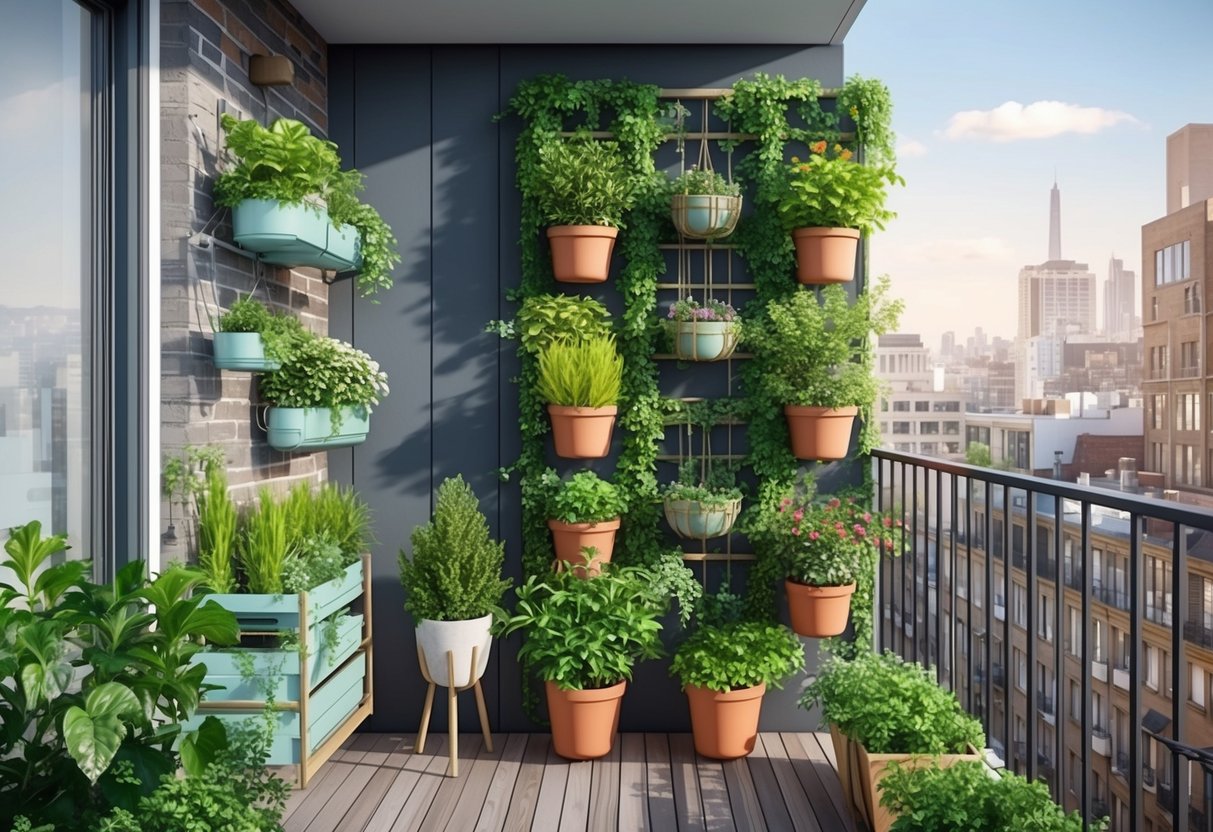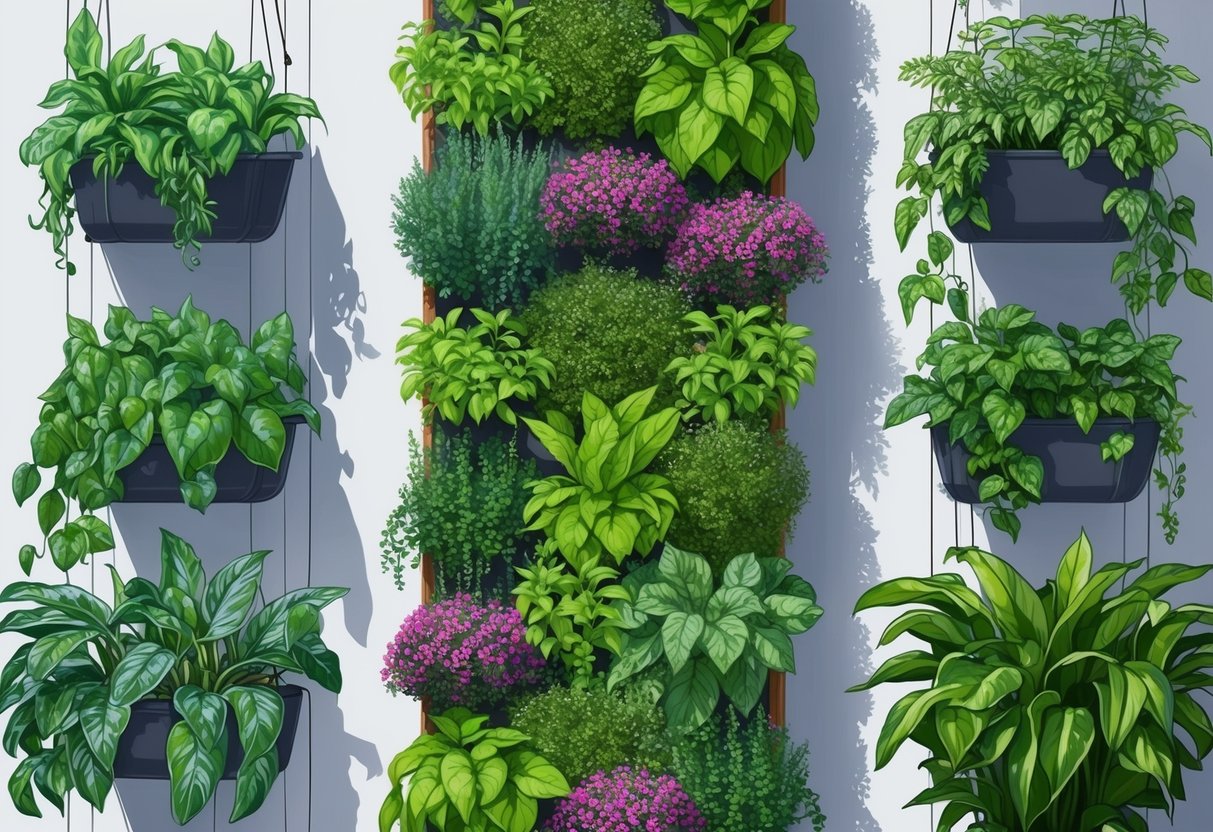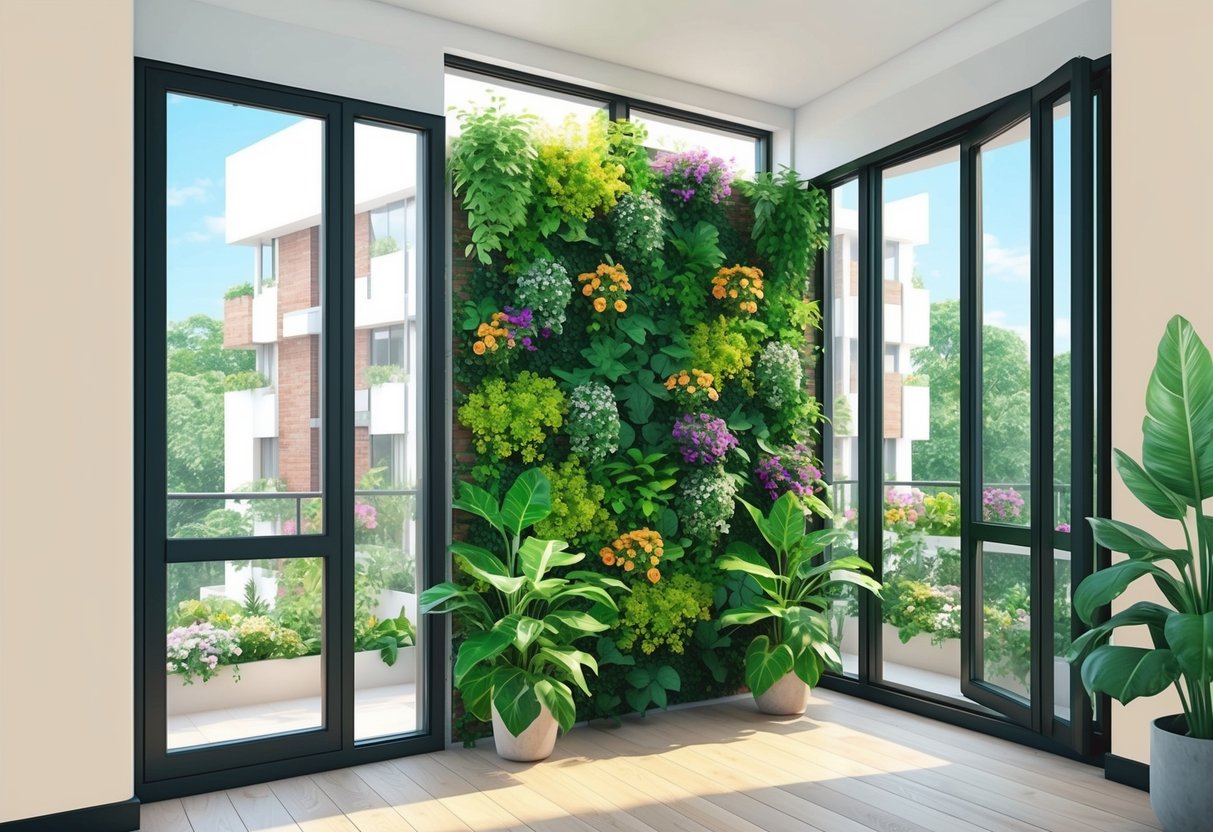
Soil, Fertilization, and Growing Mediums

A successful vertical garden relies on high-quality soil, well-chosen growing mediums, and a thoughtful feeding routine. Proper substrate choice helps support healthy root development, while consistent fertilization keeps plants vigorous and productive throughout the season.
Choosing the Right Soil and Substrates
Vertical gardens benefit from potting mixes designed for containers. These mixes promote drainage, help retain nutrients, and reduce compaction.
Using standard garden soil is not recommended, as it is often too dense for vertical spaces and can restrict airflow to plant roots. Lightweight substrates are essential, especially when mounting planter boxes or frames on walls.
Good options include mixtures made with peat moss, coco coir, perlite, or vermiculite. Some gardeners use high-quality soil blends that combine organic compost to boost fertility and improve moisture retention.
Hydroponic vertical gardens often use inert mediums like rockwool, expanded clay pellets, or felt pockets. For vegetable gardening in vertical planters, substrate depth and composition directly affect yields, so use a mix that stays airy but doesn’t dry out too quickly.
Regularly check moisture, as vertical setups can lose water faster than in-ground beds.
Feeding and Fertilizing Vertical Gardens
Vertical garden plants need steady nutrients to counteract leaching caused by frequent watering. Use slow-release granular fertilizers blended into the soil at planting, or adopt a schedule with liquid feeds every two to four weeks for heavy feeders like tomatoes or peppers.
Look for fertilizers formulated for vegetables or flowers, depending on your crop. Organic options, such as fish emulsion or seaweed extract, are gentle and help support soil microbes.
Adjust feeding based on plant growth and visible signs of nutrient deficiency, such as yellowing leaves or poor vigor. Tip: Lighter soils may require more frequent fertilization, especially for vertical vegetable gardening.
Always water after fertilizing to help nutrients reach the root zone and avoid leaf burn. Monitor plants routinely, adjusting the regimen according to each species’ requirements and the unique climate conditions in your garden.
For more guidance, review vertical gardening success tips.
Care and Maintenance for Thriving Vertical Gardens

Consistent upkeep ensures healthy, productive plants and keeps a vertical vegetable garden looking attractive. Attention to daily and seasonal needs will extend the functionality and harvest of your vertical garden setup.
Pruning and Supporting Plants
Regular pruning plays a critical role in maximizing growth and air circulation in a vertical garden. Trimming overcrowded or dead leaves prevents the spread of disease and helps more sunlight reach every plant, supporting healthier stems and leaves.
For a vertical vegetable garden, pinching back leggy shoots or spent flower heads encourages bushier growth and improves vegetable yields. Sturdy plant support structures, such as trellises, modular racks, or netting, keep vines and taller vegetables upright.
Using plant clips, soft ties, or hooks gently secures stems without damaging them. Choosing the right type of support depends on the weight and habit of each plant, so adjust according to what is grown.
Maintaining these supports and staying on top of pruning reduces tangling and discourages pests. For more ideas on support structures and maximizing small spaces, see strategies at Agriscaping’s guide to vertical gardening.
Pest Management in Vertical Gardens
Pest management starts with routine inspections. Check plant leaves (both sides), stems, and soil for insects like aphids or spider mites, as pests can quickly damage densely planted areas.
Remove pests by hand where possible, or use a gentle stream of water for small infestations. Encouraging beneficial insects, such as ladybugs, helps naturally reduce pest populations.
Choose disease-resistant varieties well suited to vertical gardening to further lower risks. Organic sprays like neem oil provide another layer of defense when necessary.
Air circulation from vertical arrangement can sometimes limit fungal diseases, but overcrowding reverses this advantage. Be mindful not to overwater and promptly remove any affected leaves to prevent further spread.
Group plants with similar pest vulnerabilities cautiously to avoid fast outbreaks.
Seasonal Tips for Longevity
Vertical gardens require adjustments across the seasons. In spring and summer, monitor moisture since containers dry out faster; water regularly but ensure proper drainage to prevent root rot.
In autumn, trim back annuals and harvest herbs or vegetables before temperatures drop below safe levels. For perennial-focused vertical gardens, add mulch at the base of planters to protect roots and conserve moisture during cold months.
Move portable vertical racks indoors or to a sheltered spot during frost. Use seasonally appropriate fertilizers to supply nutrients as growing conditions change.
Inspect all plant supports and wall fixtures before winter arrives. Repairing weak points reduces weather-related damage and extends garden longevity.
Enhancing Health, Sustainability, and Indoor Air Quality

Vertical gardening not only helps conserve space in urban homes, but it also provides unique benefits for personal health and environmental sustainability. Incorporating green walls and living walls can actively improve daily living by filtering air and supporting conscious consumption habits.
Air Filtration and Health Benefits
Indoor vertical gardens are proven to improve air quality by acting as natural air filters. Plants commonly used in vertical systems, such as pothos, spider plants, and ferns, absorb airborne pollutants like formaldehyde and benzene.
This process reduces common indoor toxins and can contribute to fewer allergies or respiratory issues. A well-designed living wall can also boost humidity, which helps soothe dry air in apartments and condos.
Elevated humidity from plant transpiration may reduce dry skin and irritation during winter months. According to experts, vertical gardens can even improve mental well-being by increasing exposure to greenery and natural elements indoors.
More information about air quality improvement with vertical gardens can be found at Green.org.
Sustainable Vertical Gardening Practices
Practicing sustainability is straightforward with vertical gardening techniques. Vertical garden setups use less water compared to traditional gardening methods because they encourage efficient irrigation and minimize waste.
Drip irrigation and hydroponic systems are popular choices for reducing water use and maximizing yields. Many vertical gardens utilize recycled materials—like repurposed pallets, plastic bottles, or modular panels—for their structures.
This reduces landfill waste and lowers the carbon footprint of garden installation. Growing fresh produce at home with a vertical garden supports urban gardening and lowers reliance on commercially grown vegetables that require transportation and packaging.
For tips on creating sustainable, space-saving designs, visit this guide to vertical gardening at home.